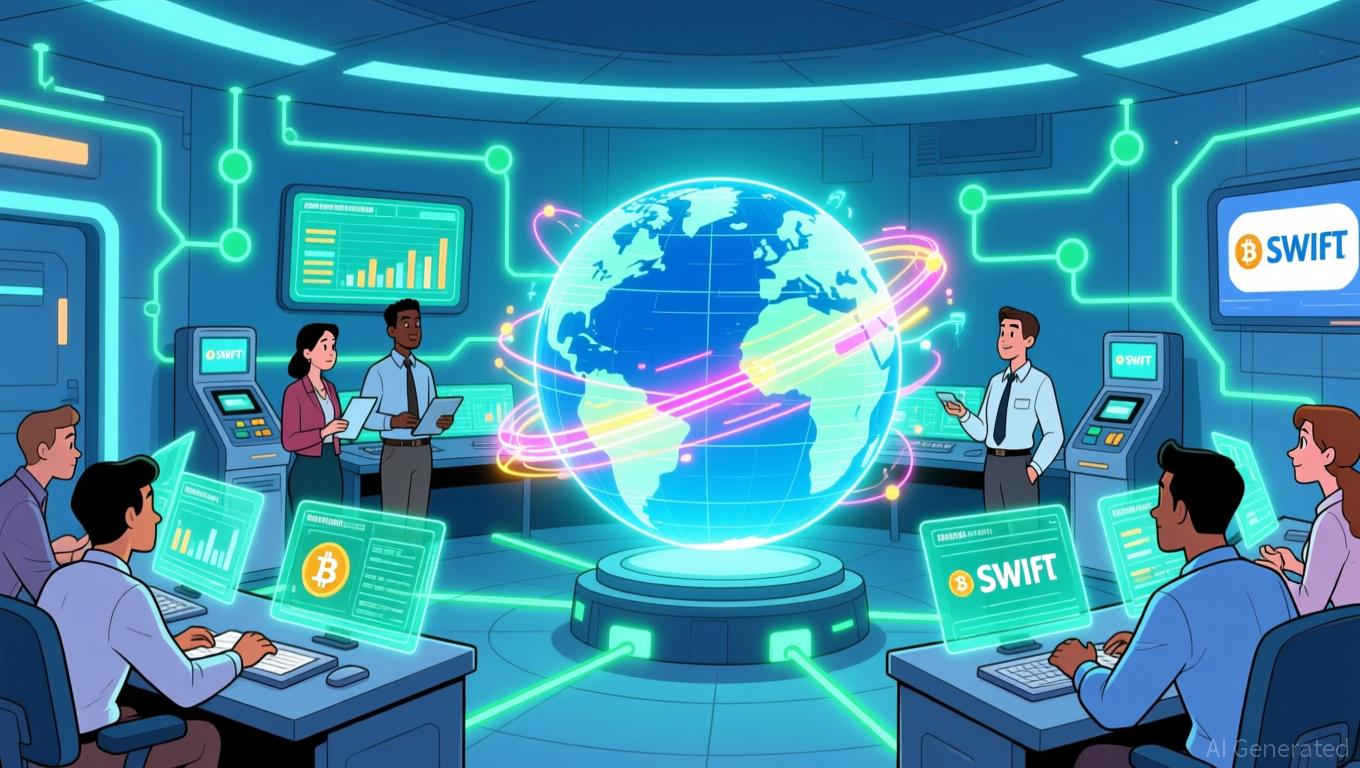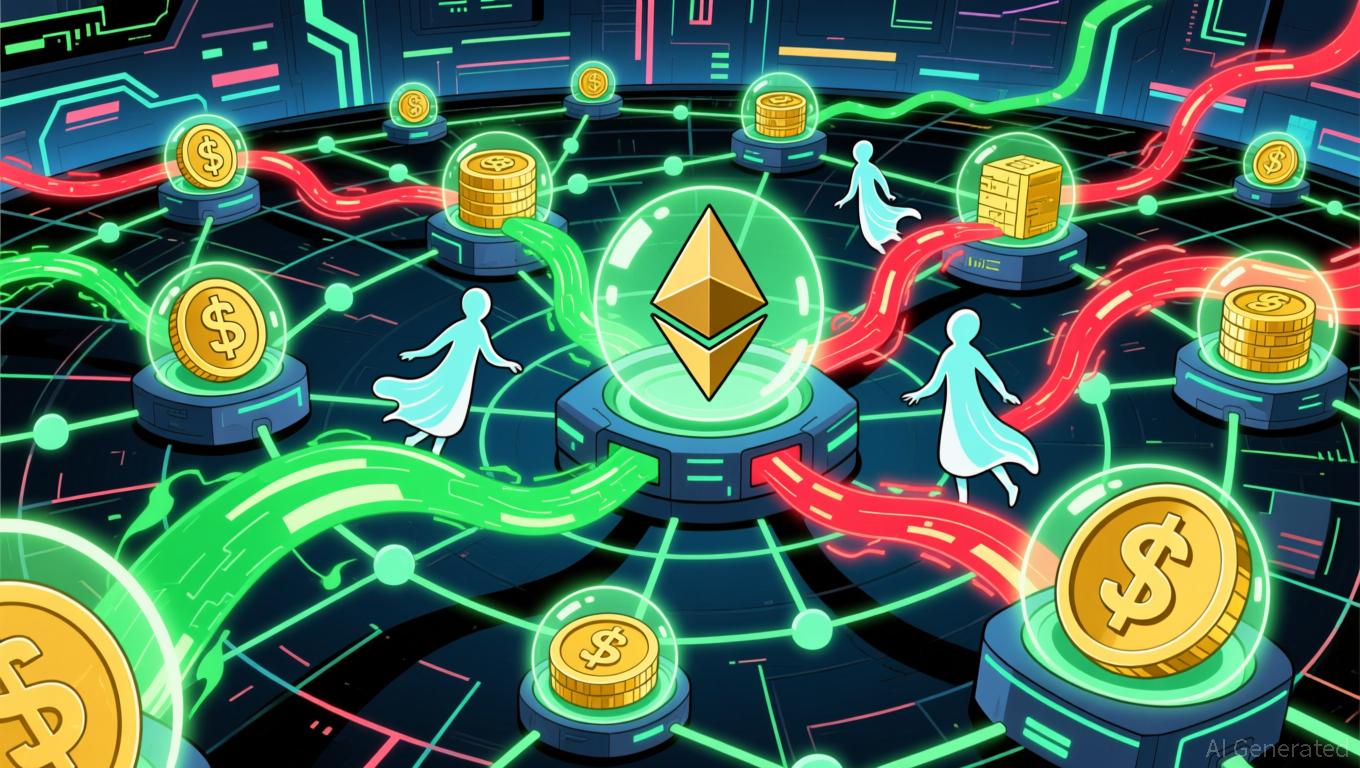XRP News Today: SWIFT's Transition to ISO 20022: Laying the Foundation for a Blockchain-Powered Tomorrow
- SWIFT retired its legacy MT format on November 22, 2025, completing a global shift to ISO 20022 for richer data exchange and blockchain integration. - ISO 20022's flexible XML architecture enables compliance, reduces payment failures, and supports cryptocurrencies like XRP in CBDC ecosystems. - Banks face operational challenges adapting legacy systems, but ZKB and others leveraged tools like Smartstream to streamline migration and automation. - The standard strengthens AML/KYC protocols by structuring da
On November 22, 2025, SWIFT achieved a significant milestone in its worldwide transition to the ISO 20022 standard, officially discontinuing the legacy MT (Message Type) format. This change represents a major evolution in international financial communications,
For almost five decades, SWIFT’s MT format functioned as the common language for global finance, facilitating transactions through its strict, fixed-field setup. Since its introduction in 1977, MT enabled efficient alphanumeric messaging between diverse banking platforms, supporting the expansion of international commerce. However,
This migration has accelerated the use of blockchain, with SWIFT intentionally aligning ISO 20022 with protocols such as Ripple’s Interledger Protocol (ILP) and Stellar’s cross-border payment solutions.

The majority of banks and financial organizations have finalized their migrations, though some obstacles remain.
The advantages of ISO 20022 go beyond technical enhancements.
Looking forward, the U.S. Federal Reserve’s planned adoption of ISO 20022 in July 2025 and the SEPA region’s full implementation highlight a worldwide movement toward unified, data-rich payment systems. As SWIFT completes its transition, the financial sector is poised for an environment where blockchain, CBDCs, and traditional systems operate together smoothly. For banks, the next challenge is not just compliance, but
Disclaimer: The content of this article solely reflects the author's opinion and does not represent the platform in any capacity. This article is not intended to serve as a reference for making investment decisions.
You may also like
Bitcoin Updates: Saylor’s Bitcoin-Linked Strategy Encounters Index Removal and Industry-Wide Sell-Off Challenges
- Michael Saylor of MicroStrategy (MSTR) defends Bitcoin-centric strategy despite 41% stock decline, claiming resilience against 80% drawdowns. - MSCI's proposed index exclusion rule (for crypto-heavy firms) threatens $8.8B in losses for MSTR , which holds 90% Bitcoin on its balance sheet. - Bitcoin treasury sector faces "player-versus-player" selloff, with 26/168 firms trading below reserves and peers like Metaplanet launching buyback facilities. - Saylor envisions $1T Bitcoin balance sheet for financial

Political Stalemate Results in $11 Billion Loss, Highlighting Deep-Rooted Flaws in the System
- U.S. government shutdown in late 2025 caused $11B economic loss, disrupted critical data collection for CPI and employment reports. - Treasury Secretary Bessent highlighted recession risks in rate-sensitive sectors but emphasized services-driven inflation, not Trump trade policies. - "One Big, Beautiful Bill" tax cuts aim to boost incomes, with analysts projecting 0.4pp growth boost despite Fed rate constraints. - Shutdown intensified calls for congressional reform to end gridlock, as prediction markets

XRP News Today: XRP ETFs Ignite Discussion: Could Institutional Investments Drive a 465% Price Increase?
- Franklin Templeton and Grayscale's XRP ETFs cleared NYSE Arca approval, set for Nov 24 launch, marking institutional adoption of digital assets. - XRPZ ETF (0.19% fee) and Grayscale's entry boost institutional credibility, with XRP rising 5% amid 26% higher trading volume. - Analysts project 465% XRP price potential by 2028 via ETF-driven demand, though BlackRock's potential entry could strain XRP's 60B token supply. - Regulatory clarity and pro-crypto policies, including the Genius Act, reinforce invest
Ethereum Updates Today: DATs Buyback Strategy May Surpass Liquidity Challenges Amid Rising Debt
- FG Nexus sold $32.7M in ETH to repurchase 8% of shares amid 94% stock price drop, reflecting DAT sector struggles with NAV discounts. - Industry-wide $4-6B in forced crypto liquidations by DATs highlights systemic risks as debt rises and liquidity tightens across firms like ETHZilla and AVAX One . - Analysts warn debt accumulation and stalled corporate buying could worsen instability, while companies pivot to tokenization to address declining investor appetite. - Market skepticism persists as FG Nexus tr
